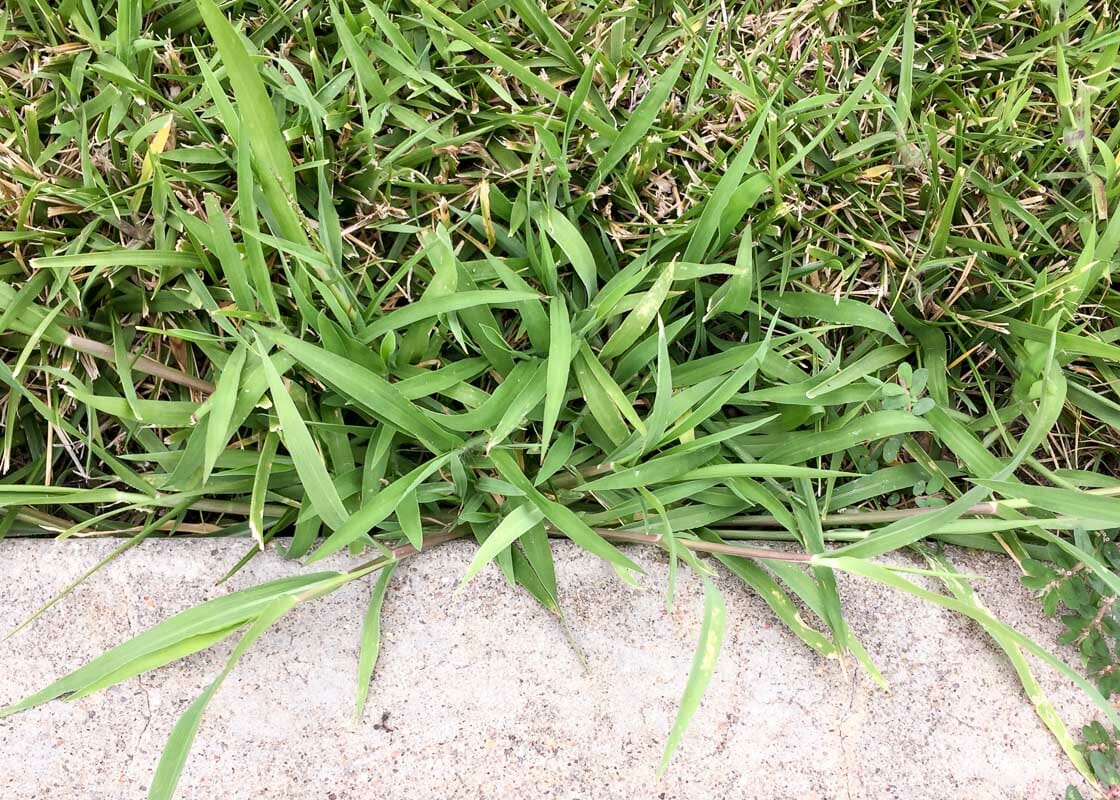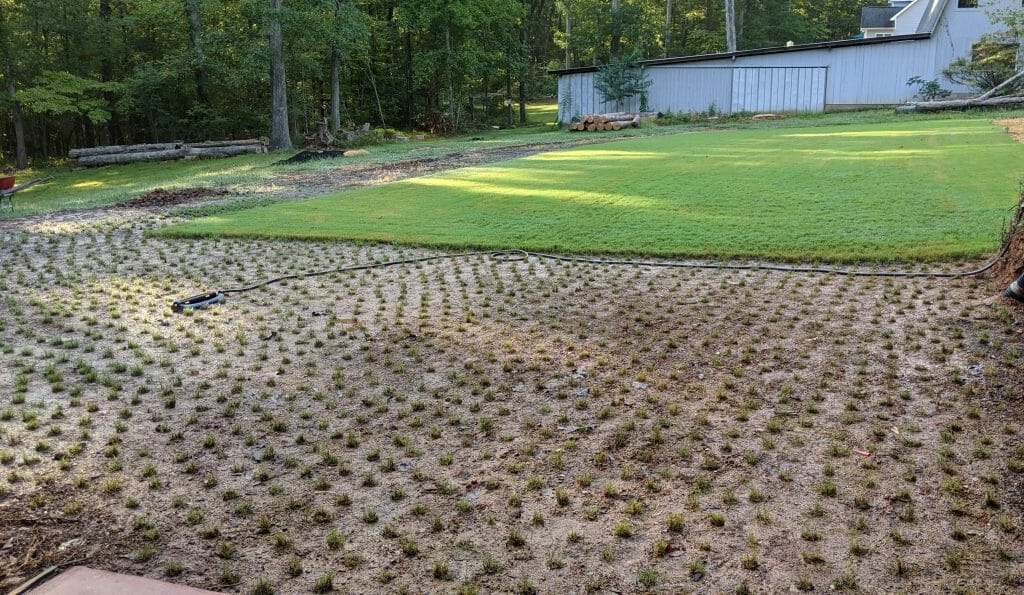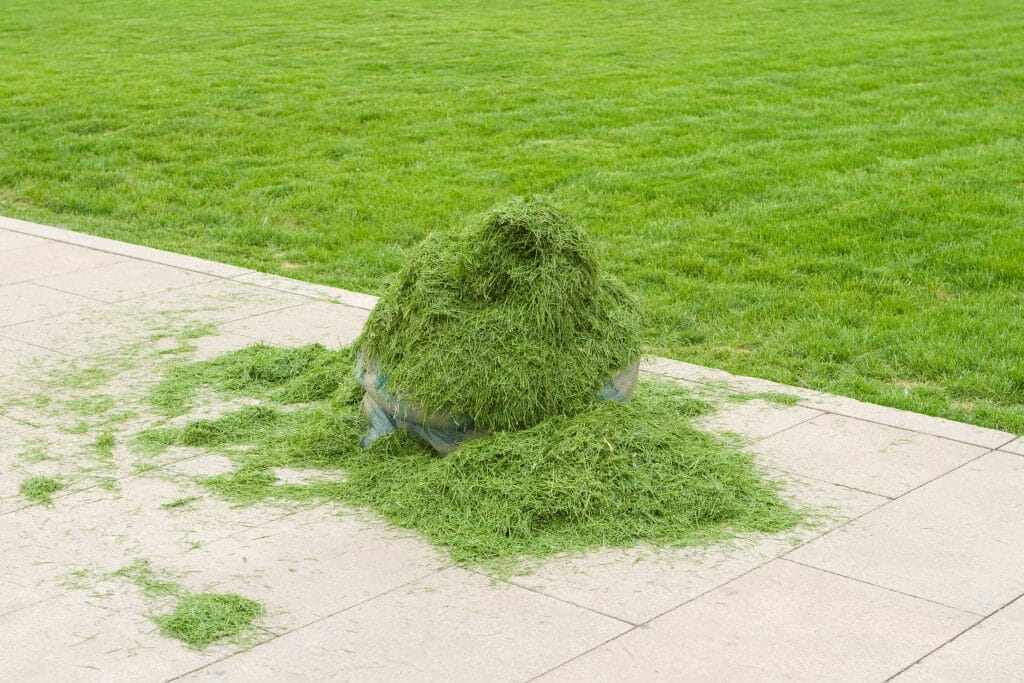Crabgrass preventer is a pre-emergent herbicide that should be put down before a light rain shower. The water will help the soil absorb the chemicals in the crabgrass preventer.
Crabgrass is a very common annual weed in the United States and one that easily spreads across your lawn. That is why it is very important to know when your lawn is at greatest risk of this invasive species and when to put down crabgrass preventer.
Read on to learn more about crabgrass preventer and how to use it on your lawn.
What Is Crabgrass Preventer?
Crabgrass preventer is a type of herbicide specifically targeting the crabgrass weed. It is referred to as a preventer because it is a pre-emergent herbicide.
A pre-emergent herbicide stops weeds from growing but they are not effective in killing weeds once the weeds have germinated. That is why timing is very important when putting down crabgrass preventer.
Crabgrass preventer usually comes in the form of granules. These granules need to dissolve into the soil so that the ingredients spread through the soil and kill off any crabgrass seeds and seedlings.
When to Apply Crabgrass Preventer
Home owners often ask whether crabgrass preventer should be put down before or after rain but there is an even more important factor determining when to apply crabgrass; temperature.
The ideal soil temperature for crabgrass is 57°F to 64°F. Once the soil reaches this temperature the seeds will start to germinate quickly.
That is why crabgrass preventer should be applied just before the soil reaches 57°F, around 55°F. In many states this is around early spring but of course this differs per location.
The second most important factor is soil moisture. Once the soil temperature nears 55°F, pay attention to the weather forecast and when it is going to rain.
The soil needs to be moist to properly dissolve and absorb the crabgrass preventer so put down crabgrass preventer before a rain shower.
If the weather is going to stay dry but the soil is reaching the right temperature, the lawn has to be kept moist in other ways. Either provide proper irrigation or frequently turn on the sprinkler in the days after applying crabgrass herbicide.
Do not apply crabgrass preventer after rain. When applying pre-emergent herbicide on wet grass, the herbicide tends to stick on the stems instead of sinking into the soil.
Frequently Asked Questions:
Should You Mow Before Applying Crabgrass Preventer?
Mowing your lawn before applying crabgrass preventer can improve the absorption of the pre-emergent herbicide. When you spread crabgrass preventer over a lawn with tall grass, you risk having the granules stick to the grass leaves instead.
By mowing your lawn first, you make it easier for the crabgrass preventer to reach the soil. However, it is still important to water the lawn after application to help dissolve the chemicals.
Can I Apply Crabgrass Killer and Fertilizer at the Same Time?
It is possible to apply crabgrass preventer and fertilizer at the same time. As long as the herbicide is properly absorbed, the fertilizer won’t limit the effectiveness.
On the other hand, it is not a good idea to apply fertilizer before putting down crabgrass preventer. Fertilizer may speed up the germination process of crabgrass in which case the pre-emergent herbicide will no longer work.
Can You Put Down Too Much Crabgrass Preventer?
Yes, it is not good for your lawn to put down too much crabgrass preventer. This pre-emergent herbicide is long-lasting so it only needs to be applied 2 – 3 times a year.
If applied properly, crabgrass preventer can last up to 6 months. As long as the herbicide is still effective, it is not necessary to apply more. This is because crabgrass preventer can also affect the natural growing cycle of lawn grass species.
Summary
Crabgrass preventer is an effective method for stopping crabgrass from taking over your lawn. However, since crabgrass preventer is a pre-emergent herbicide, it has to be applied before crabgrass has the chance to germinate.
Many recommend putting down crabgrass preventer in early spring because this is when soil starts to reach the ideal temperature for crabgrass to grow. The ideal growing temperature of crabgrass is 57°F – 65°F which is why the best time to apply crabgrass temperature is when the soil temperature reaches 55°F.
Crabgrass preventer should be applied just before a rain shower to help the soil better dissolve and absorb the chemicals. Never put down crabgrass pre-emergent herbicide after rain or when the grass is still wet from the sprinkler because this will cause the granules to stick on the stems instead of sinking into the soil.



